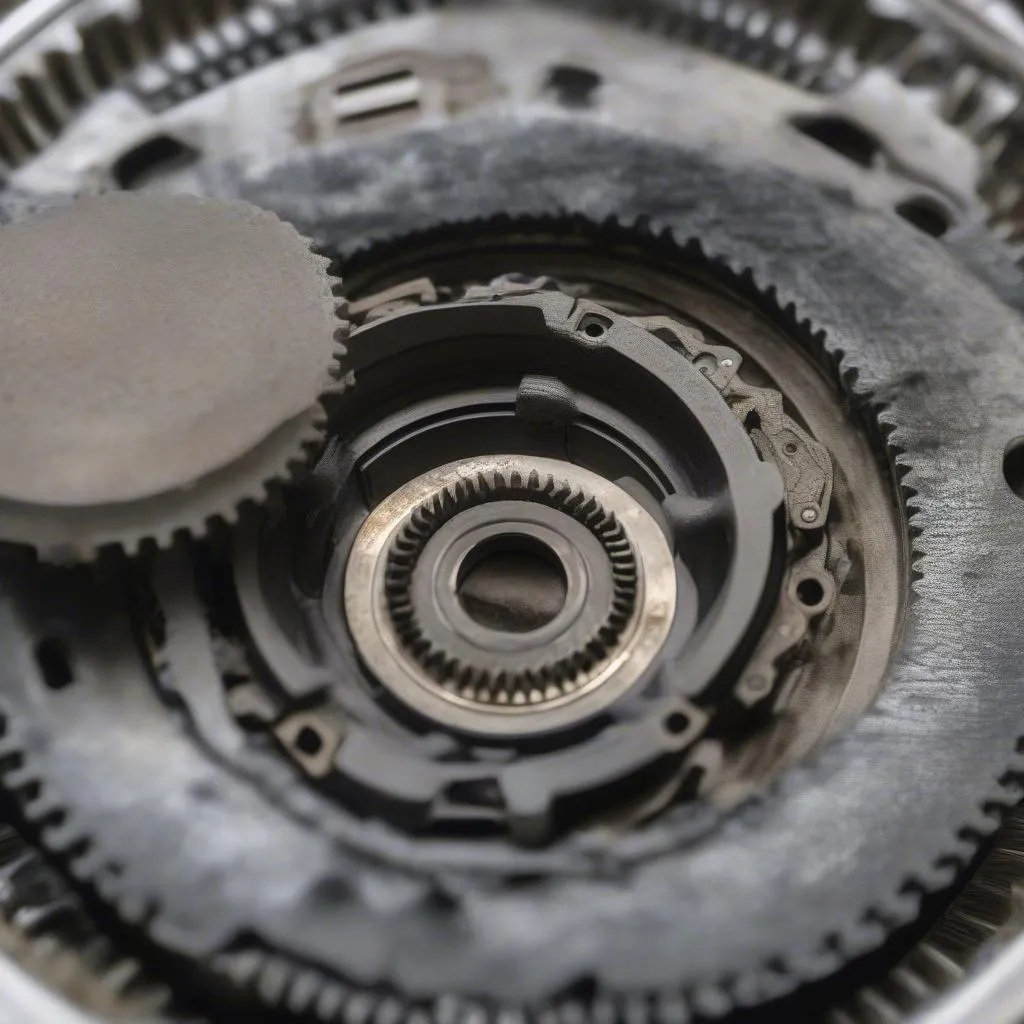Is your 1983 Mercedes 300SD experiencing a transmission flare? This common issue can be frustrating and even a little scary if you’re unsure what’s causing it. Transmission flaring happens when the engine revs up during shifting, but the vehicle doesn’t accelerate as it should. Instead, you experience a delay or a “slipping” feeling before the next gear engages. This guide will walk you through the common causes of transmission flaring in a 1983 Mercedes 300SD and what you can do to fix it.
Understanding the Causes of Transmission Flaring
Before you jump into repairs, it’s crucial to pinpoint what’s causing your 300SD’s transmission to flare. Here are the most common culprits:
1. Low Transmission Fluid:
This is the most common cause of transmission flaring. Just like engine oil, transmission fluid lubricates moving parts, conditions seals, and helps transfer heat. Low fluid levels can disrupt these essential functions leading to flaring and other shifting issues.
2. Worn Out Transmission Fluid:
Over time, transmission fluid breaks down and loses its effectiveness. This can cause a range of problems, including flaring, rough shifting, and even complete transmission failure.
3. Faulty Vacuum Modulator:
The vacuum modulator controls the transmission’s shifting pressure based on engine load. A faulty modulator can disrupt this pressure, leading to improper shifting and, yes, transmission flaring.
4. Worn Out Clutch Packs:
Inside your transmission, clutch packs engage and disengage gears. Over time, these clutch packs can wear out, causing slippage and flaring.
5. Valve Body Problems:
The valve body directs fluid flow within the transmission. Worn valves or solenoids within the valve body can also cause inconsistent fluid pressure, leading to shifting problems.
 worn clutch pack
worn clutch pack
Identifying Transmission Flare Symptoms
How can you be sure that transmission flaring is the culprit? Here are some telltale signs:
- Engine Revs Up During Shifting: You’ll notice the engine RPMs increase without a corresponding increase in vehicle speed.
- Delayed or Slipping Shifts: Instead of a smooth transition, there’s a noticeable delay or a “slipping” sensation between gears.
- Burning Smell: If your transmission fluid is overheating due to low levels or a mechanical issue, you might notice a burning smell.
 transmission dipstick
transmission dipstick
Gathering Your Tools and Equipment
Before you start any repairs, make sure you have the following:
- Transmission Fluid (Dexron II or equivalent): Refer to your owner’s manual for specific recommendations.
- Transmission Fluid Pan Gasket
- Transmission Filter
- Torque Wrench
- Drain Pan
- Jack and Jack Stands
- Safety Glasses
- Gloves
- Rags
Troubleshooting and Fixing the Problem
1. Check the Transmission Fluid Level and Condition:
- Park the car on a level surface and engage the parking brake.
- With the engine running and the transmission in “Park,” locate the transmission dipstick (usually located near the firewall).
- Remove the dipstick, wipe it clean, reinsert it, and remove it again to check the fluid level. The level should be within the “Hot” mark.
- Inspect the fluid’s color and smell. Fresh transmission fluid is typically bright red. If it’s dark brown or black and has a burnt odor, it’s time for a change.
Expert Insight: “Checking your transmission fluid regularly is one of the easiest yet most overlooked maintenance tasks,” says automotive expert Emily Carter, author of “The Complete Car Care Guide.” “Neglecting this simple check can lead to costly repairs down the line.”
 transmission fluid change
transmission fluid change
2. Perform a Transmission Fluid and Filter Change:
If the fluid level is low or the fluid is dirty, a fluid and filter change is essential. This involves:
- Draining the old transmission fluid from the transmission pan.
- Removing the transmission pan and replacing the old gasket.
- Replacing the transmission filter.
- Reinstalling the pan and gasket.
- Refilling the transmission with fresh fluid.
Note: This process is best handled by a qualified mechanic, especially if you’re not comfortable working on your car.
3. Inspect and Replace the Vacuum Modulator:
- Locate the vacuum modulator on the transmission housing (it’s a small, round component with a vacuum hose attached).
- Check the vacuum hose for cracks or damage. Replace if necessary.
- With the engine running, carefully disconnect the vacuum hose from the modulator. If you notice transmission fluid in the hose, the modulator is likely faulty and needs replacement.
- Installation is the reverse of removal. Ensure the new modulator is properly seated and the vacuum hose is securely attached.
4. Address Clutch Pack or Valve Body Issues:
Diagnosing and repairing issues with the clutch packs or valve body requires specialized knowledge and tools. If you suspect these components are at fault, it’s best to seek assistance from a qualified transmission specialist. They have the expertise to properly diagnose and repair these complex systems.
Frequently Asked Questions (FAQs)
Q: Can I drive my car with a flaring transmission?
A: It’s not recommended. Driving with a flaring transmission can lead to further damage and more costly repairs down the road.
Q: How often should I change my transmission fluid?
A: Mercedes recommends changing the transmission fluid and filter every 30,000 miles for the 1983 300SD. However, consult your owner’s manual for specific recommendations for your vehicle.
Q: Are there any diagnostic tools that can help pinpoint transmission problems?
A: Yes, OBD2 scanners, particularly those with advanced features, can read transmission codes and provide valuable insights into the problem. CARDIAGTECH offers a range of OBD2 scanners suitable for various levels of automotive expertise.
Q: Can I use any type of transmission fluid in my Mercedes 300SD?
A: No, it’s essential to use the type of transmission fluid specified in your owner’s manual. Using the incorrect fluid can lead to poor transmission performance and potential damage.
Conclusion
A flaring transmission can be a sign of a minor issue or a more serious problem. By following the steps outlined in this guide, you can diagnose the cause of the problem and take the necessary steps to fix it. Remember, if you’re unsure about any part of the process, it’s always best to consult a qualified mechanic.
Regular maintenance and prompt attention to transmission issues can help extend the life of your 1983 Mercedes 300SD’s transmission and keep you on the road for miles to come.



